A nourishing blend of flavors in this Japanese and Korean-style Multigrain Rice, where a medley of seven whole grains creates a comforting and versatile staple unique to each maker's touch.
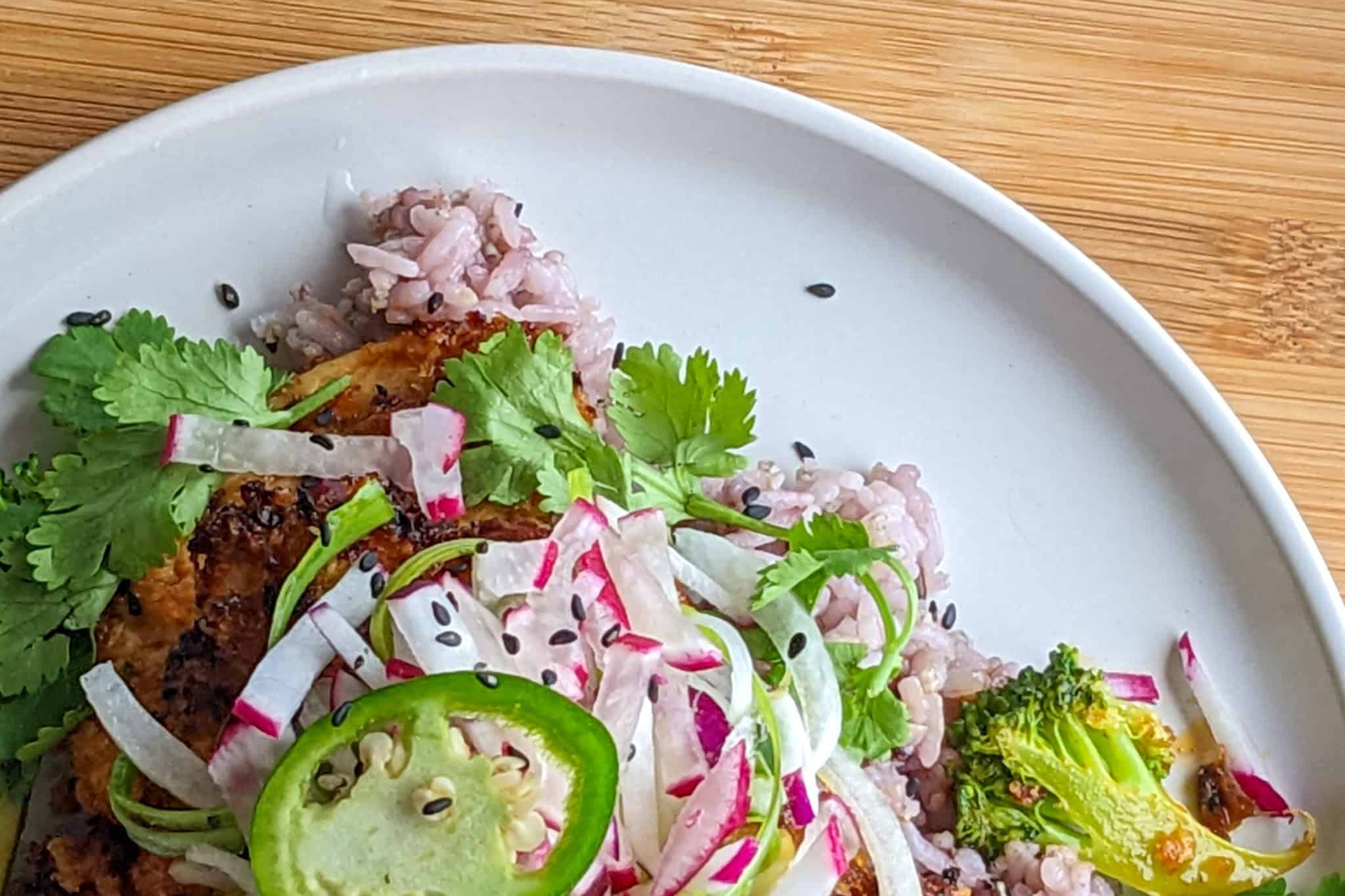
Table of Contents
Jump to:
- That Pretty Purple Rice
- What Makes Up Multigrain Rice?
- What Regular Rice to Use with Multigrain Rice?
- Heukmi Bap: Similiar But Not the Same.
- Korean and Japanese Cuisine
- The Rice Cooker’s Benefits
- Ingredients with Steps
- Instructions with Pictures
- Steps to Fluff Rice
- Variation Tips: Homemade Multigrain Portions
- Equipment
- Top 3 Best Rice Cookers Buyers Guide (w/ Chart)
- Top 3 Best Pots for Rice Buyers Guide (w/ Chart)
- Storing and Reheating Rice
- Cooking Tips
- Frequently Asked Questions
- East Asian-Inspired Recipes
- Side Dish Recipes
- 📖 Recipe
- Subscribe to the YouTube Channel
- Have a Comment or Question?
That Pretty Purple Rice
Experience a hearty and nourishing blend of flavors in this Japanese and Korean-style multigrain rice, where a medley of seven whole grains creates a comforting and versatile staple unique to each maker's touch with a pretty purple color.
This is my way of making Korean purple rice, and while it may not be the authentic method, it’s a recipe I love to make serve with homemade Korean food, such as rice bowl dishes, and to add to dishes like samgyetang (Korean chicken soup). The result is a filling, nutritious side that enhances any meal.
What Makes Up Multigrain Rice?
Multigrain rice, known as japgokbap in Korea and zakkokumai in Japan, is a nutritious blend of various grains like black rice, barley, millet, and adzuki beans, among others. It’s often called "purple rice" due to the deep purple hue that develops as the black rice cooks, releasing its natural pigments.
This traditional mix is a dietary staple in both cultures, celebrated for its rich texture, nutty flavor, and great health benefits, including high fiber content, essential vitamins, and antioxidants. The origins of multigrain rice trace back to ancient times, where it was cherished for its sustenance and health properties, making it a vital part of daily meals.
What Regular Rice to Use with Multigrain Rice?
For Korean and Japanese multigrain rice, the best base rice to use is short-grain white rice or short-grain brown rice, both of which are commonly found in Korean and Japanese cuisine. Short-grain rice has a sticky, slightly chewy texture that holds the multigrain mixture together, creating a cohesive and satisfying dish.
While white rice provides a milder flavor and a softer texture, brown rice adds a nutty flavor and extra fiber. You can also use a mix of both white and brown short-grain rice for a balance of taste and nutrition. This type of rice pairs well with the various grains and beans typically added to multigrain rice, such as black rice, barley, and adzuki beans, ensuring that the final dish is both hearty and flavorful.
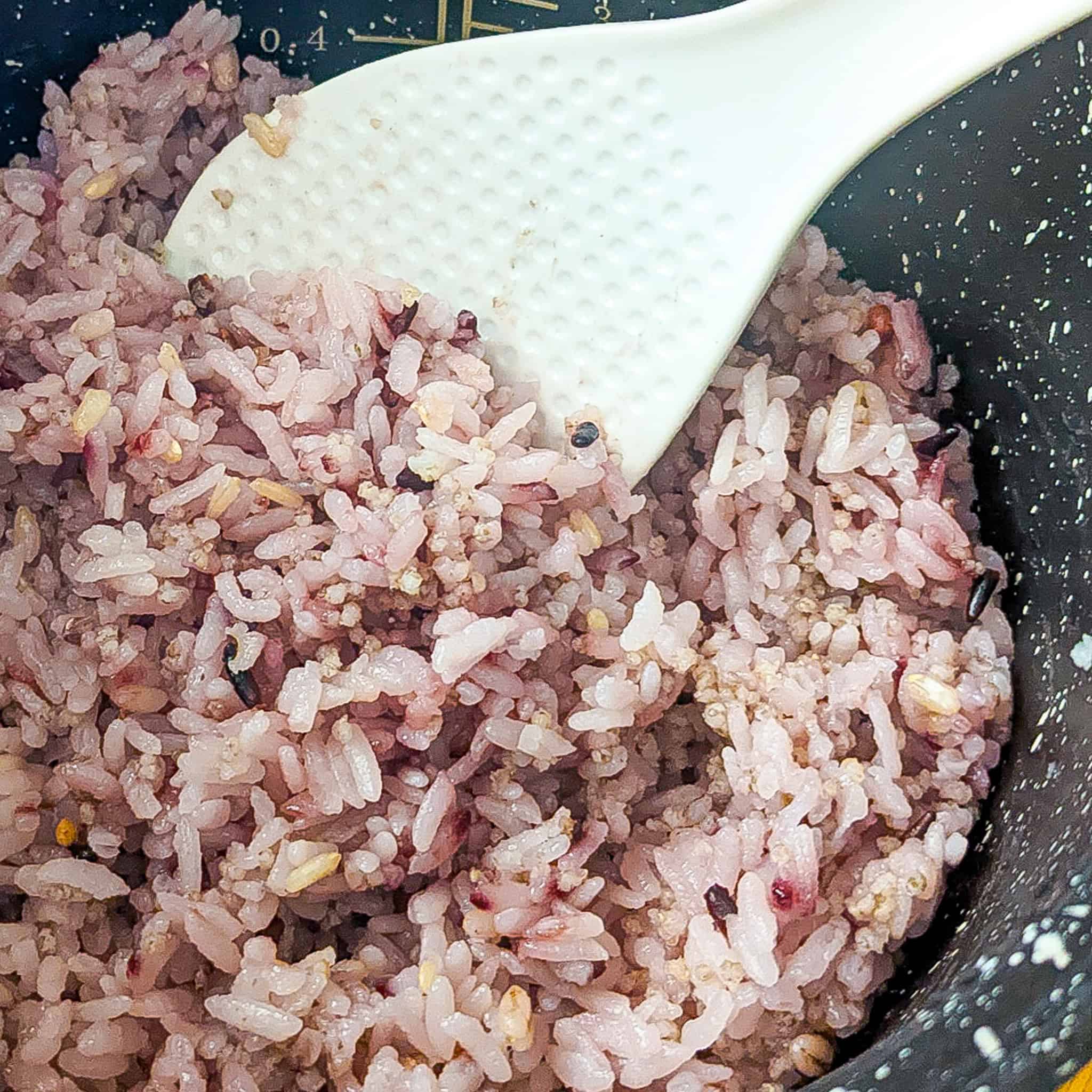
Heukmi Bap: Similiar But Not the Same.
Heukmi Bap, a Korean dish of white rice mixed with black rice, is closely related to multigrain rice (Japgokbap or Ogokbap) but is more specific in its focus on black rice for its health benefits and unique flavor. While Heukmi Bap combines only two types of rice, multigrain rice is a broader mixture of various grains and beans, offering a more diverse nutritional profile.
The tradition of mixing grains in Korean cuisine, seen in both dishes, reflects a historical and cultural emphasis on balanced nutrition. Heukmi Bap likely influenced the development of the more complex multigrain rice blends that are popular today.
Korean and Japanese Cuisine
Korean and Japanese cuisines share a complex history, heavily influenced by cultural exchanges, trade, and conflict, particularly during the Japanese occupation of Korea in the early 20th century. This period led to the integration of Japanese elements into Korean cuisine, resulting in similar dishes with different names, such as gyudon (Japanese beef bowl) and bulgogi (Korean marinated beef).
While each country maintains its unique culinary identity, the cross-cultural influences are undeniable. China, too, has played a significant role in shaping both Korean and Japanese food culture, contributing techniques, ingredients, and culinary philosophies that continue to resonate in dishes across East Asia.
The Rice Cooker’s Benefits
My Haitian people may disown me for this, but my rice cooker is my go-to for making rice, compared to the stovetop. I joke about this because Haitians are known for making some of the best rice dishes in the world, all cooked on the stovetop with pride and precision.
However, the rice cooker’s convenience, consistency, and ability to perfectly cook a variety of grains with minimal effort make it indispensable in my kitchen, especially when preparing Korean purple rice.
For authentic Korean Cuisine, visit the following food blogs:
Get More Rice Tips: Cooking Rice is the Hub for all the rice recipes used on JustMaikaCooking.
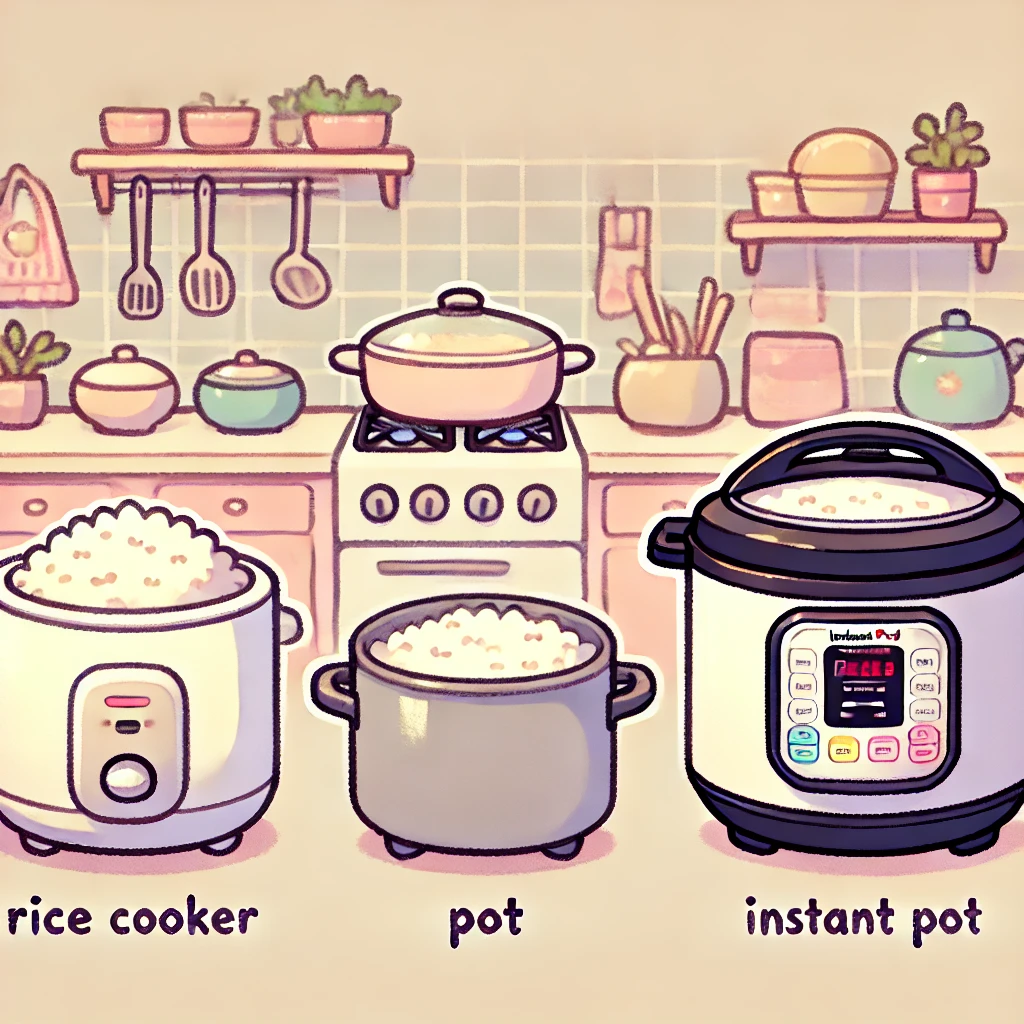
Ingredients with Steps
Find your cooking method. This section provides three different cooking methods for making multigrain rice, allowing you to choose the one that best fits your kitchen setup and preferences—whether you prefer the convenience of a rice cooker, the precision of an Instant Pot, or the traditional approach of stovetop cooking, you can make it just the way you like.
For the Rice Cooker:
To prepare the multigrain rice in a rice cooker, first, remove the insert and pour in the multigrain mixture, filling the insert halfway with water. Use a rice paddle to stir the mixture, loosening starch and impurities, then drain the water, repeating this rinsing process two more times.
Next, add fresh water to cover the rice up to your first knuckle (about 1 ½ cups of water), add salt, mix well, and return the insert to the rice cooker. Select the "brown rice" or "grain" setting, and cook for 50-57 minutes, yielding about 2 cups of cooked rice. Note that cooking times may vary depending on your rice cooker brand.
For the Stove Top:
To prepare multigrain rice on the stovetop, first, rinse the grains by placing them in a large pot, filling it halfway with water, and stirring to loosen starch and impurities. Drain the water using a sieve to catch any escaped grains, and repeat this rinsing process two more times. After rinsing, add fresh water to cover the rice by about 1 inch (approximately 1 ½ cups), add salt, and mix well.
Place the pot over medium heat and bring it to a boil. Once boiling, reduce the heat to low, cover the pot, and let it simmer for 45-50 minutes without lifting the lid. Check for doneness after 45 minutes, and if needed, continue simmering for an additional 5-10 minutes. Once cooked, remove the pot from the heat and let it sit, covered, for 5-10 minutes before fluffing the rice with a fork and serving.
For the Instant Pot:
To make multigrain rice in an Instant Pot, first, rinse 1 cup of the multigrain mixture under cold water until the water runs clear. Transfer the rinsed grains to the Instant Pot, add 1 ¼ cups of water and a pinch of salt. Secure the lid, set the Instant Pot to "Pressure Cook" or "Manual" for 20 minutes on high pressure, and ensure the valve is set to "Sealing." After cooking, allow the pressure to naturally release for 10 minutes before switching the valve to "Venting" to release any remaining pressure. Fluff the rice with a fork and serve. This method yields about 2 cups of cooked rice.
Culinary Glossary
This section provides concise definitions of key ingredients and techniques to enhance understanding and improve cooking skills related to this recipe. Check out the live Culinary Glossary here.
- Japgokbap - Korean multigrain rice.
- Zakkokumai - Japanese multigrain rice.
- Rice Paddle - A flat, wide tool used for mixing and serving rice.
- Purple Rice - A mix of black rice and other grains, resulting in a deep purple color when cooked.
See the multi-grain rice recipe card for quantities below.
Instructions with Pictures
Follow the instructions and cooking tips below using the step-by-step picture guide.
Measuring

This Asvel Rice Container Bin with Pour Spout is convenient; it holds the rice and has a measuring cup for easy prepping.

Fill one cup of multigrain rice with ¾ cup of sushi rice.
Rating: ⭐⭐⭐⭐⭐
Purchased: April 19, 2020
My Review: I bought three Asvel Rice Container Bins to organize my pantry, and they’ve been perfect! Their sleek, compact design fits neatly side by side in my tight pantry, while each container includes a measuring cup, a pour spout for easy dispensing, and a handle for convenience. I used my chalkboard label stickers to identify what was on the side, and that's it! They hold a good amount of rice, about 4 pounds, and I’ve had no issues with spills or durability. For such a low price, these containers are a fantastic buy for anyone looking to organize their dry goods efficiently.

Then, fill with ¼ cup of multigrain mix, making the ratio ¾ sushi rice to ¼ multigrain mix.

Rinse the rice with cold water to remove the starch and any debris.
Washing

Strain the dirty water and fill it with clean water.

A trick is to fill the water to your first knuckle line for 1 cup of rice.
Cooking

Season with ½ teaspoon of kosher salt for 1 cup of rice.

When cooked, the rice will have a purple tint.
My Rating: ⭐⭐⭐⭐⭐
Purchased: May 19, 2024
My Review: I absolutely love my Zojirushi NS-LGC05XB Micom Rice Cooker & Warmer—it’s hands down one of my favorite kitchen appliances. What really sold me is how precise it is; every batch of rice or quinoa comes out perfectly fluffy and evenly cooked, no guesswork needed. I also appreciate the variety of settings it offers—whether I’m making brown rice, multigrain rice, white rice, sushi rice, or even quick-cooking something simple, it handles it effortlessly. And let’s not forget the charming little songs it plays when it starts and finishes—such a fun, quirky touch that always makes me smile while cooking.
Steps to Fluff Rice
Fluffing rice, after cooking, separates the grains, enhancing its texture and making it light, airy, and perfect for serving.
- After cooking, let the rice sit for 5-10 minutes with the lid on.
- Use a fork or rice paddle to gently fluff the rice by lifting and separating the grains.
Variation Tips: Homemade Multigrain Portions
Korean multigrain rice, known as Japgokbap or Ogokbap, typically consists of a variety of common grains and beans that contribute to its nutritional richness and hearty texture. Common ingredients include white rice or brown rice as the base, black rice (heukmi) for its color and antioxidants, barley (bori) for its chewiness, millet (chajo) for a light, fluffy texture, and sorghum (sususu) for added heartiness.
Additionally, adzuki beans (pat) or black beans (geomjeongkong) are often included for protein and a subtle sweetness.
Creating your own homemade multigrain rice blend allows you to customize the flavors, textures, and nutritional profile of your dish. Below is a list of different grains and beans that you can use to make multigrain rice, along with an ingredient information for each, so you can better understand what they are and where to find them.
Black Rice (Forbidden Rice)
Black rice, often called forbidden rice, is a type of glutinous rice that stands out with its deep purple-black color, which turns into a beautiful shade of purple when cooked. It’s got this wonderfully nutty flavor that I love, and it’s packed with antioxidants, especially anthocyanins, which are what give it that distinctive color.
In Asian cuisine, black rice isn’t just about the flavor; it also adds a stunning visual element and a satisfying texture to multigrain rice blends. Plus, it’s high in fiber and nutrients, making it a much healthier option compared to white rice. You can easily find black rice at most health food stores, Asian grocery stores, or online.
Barley
Barley is a whole grain that brings a chewy texture and a slightly nutty flavor to any dish. It’s loaded with fiber, vitamins, and minerals, particularly selenium and magnesium, which are essential for a healthy diet. I love using barley in soups, stews, and grain salads because it adds a hearty chewiness that complements the other ingredients.
When added to a multigrain rice blend, barley balances out the softer grains, giving the dish a satisfying texture. You can easily find barley at grocery stores, health food stores, or online.
Millet
Millet is a tiny, round grain that comes in a range of colors like white, yellow, and red. It’s got a mild, slightly sweet flavor that I find really versatile, and it’s packed with B vitamins, calcium, iron, and magnesium, making it a nutritional powerhouse.
I love using millet in porridge, flatbreads, or even as a rice substitute when I want something a bit different. In multigrain rice, millet adds a nice fluffy texture that blends beautifully with other grains. You can find millet at health food stores, grocery stores with a bulk section, or online.
Adzuki Beans (Red Beans)
Adzuki beans are these small, reddish-brown beans that have a sweet, nutty flavor I really enjoy. They’re packed with protein, fiber, and essential minerals like potassium and iron, making them a great addition to your diet.
I was first introduced to adzuki beans in mochi and ice cream, and I instantly fell in love with the red bean paste sweet flavor and was fascinated by the unique gritty texture of the beans. While they’re often used in Japanese and Korean sweets, I love how they also work beautifully in savory dishes.
When added to grains, like in a multigrain rice blend, adzuki beans bring a hearty texture and a subtle sweetness that complements the other ingredients perfectly. You can find them at Asian grocery stores, health food stores, or online.
Brown Rice
Brown rice is a whole grain that keeps its bran layer intact, which gives it that tan color and slightly nutty flavor I really like. My favorite brown rice is brown basmati rice because it’s not as dense as other varieties and has a wonderful nutty flavor that I really enjoy.
It’s also higher in fiber and nutrients compared to white rice, making it a healthier option. Brown rice is super versatile and makes a great base for multigrain rice, adding bulk and a nice chewy texture to the mix. You can find it pretty much anywhere—most grocery stores, health food stores, or online.
Quinoa
Quinoa is technically a seed but is often treated like a grain in cooking. It comes in a variety of colors—white, red, and black—and is well-known for its high protein content and essential amino acids, making it a nutritional powerhouse. I love using quinoa because it’s packed with protein, and if you’re interested, you can also check out my stuffed peppers and spiced basmati rice recipes, where I feature it.
I also love adding quinoa to multigrain rice because it brings a fluffy, slightly crunchy texture and gives a nice protein boost. You’ll also find it used in salads, as a rice substitute, or even in breakfast dishes. Quinoa is easy to find at most grocery stores, health food stores, or online.
Amaranth
Amaranth is a tiny, gluten-free grain that I’ve been learning more about recently. It has a mild, earthy flavor and is packed with protein, fiber, and important micronutrients like magnesium and phosphorus.
Although I’m not as familiar with amaranth, I’ve discovered that it’s really versatile—you can use it in porridge, add it to soups, or mix it with other grains in multigrain rice to give the dish a slightly sticky, chewy texture. You can find amaranth at health food stores, some grocery stores, or online.
Buckwheat Groats
Buckwheat is another ingredient I’m still getting to know, but I’m intrigued by it. It’s a gluten-free seed with a triangular shape and a bold, nutty flavor that really stands out. Buckwheat is rich in fiber, protein, and essential minerals like manganese and magnesium, which makes it a great addition to your diet.
I’ve learned that buckwheat groats are often used in porridge, pancakes, and savory dishes, and when added to multigrain rice, they bring a hearty, chewy texture and that distinctive nutty flavor. You can find buckwheat at health food stores, grocery stores with a bulk section, or online.
Additionally, I used to confuse buckwheat groats with bulgur wheat, since I’m much more familiar with bulgur wheat, known as "ble" in Haitian Creole, which we sometimes use as a substitute in our rice dishes.
Learn more about the difference between Buckwheat and Bulgar from The Incredible Bulks.
Red Rice
Red rice is a type of unpolished rice with a red husk and a slightly nutty, earthy flavor that I’m still getting to know. Although I’m still learning about it, I’ve discovered that it’s packed with fiber, iron, and antioxidants, making it a nutritious option.
Red rice adds a beautiful color to multigrain rice blends and brings a robust flavor that pairs well with other grains. It’s versatile enough to be used in salads, pilafs, or as a flavorful side dish. You can find red rice at health food stores, specialty grocery stores, or online.
Wild Rice
I first learned about wild rice in culinary school, and although it’s not a true rice but a seed from aquatic grasses, it’s become something I use every now and then in various dishes. Wild rice has a dark, almost black color, with a chewy texture and a distinct, nutty flavor that really stands out.
It’s often mixed with other grains in salads, stuffing, and casseroles, and when added to multigrain rice, it brings a chewy texture and an earthy, robust flavor that I love. You can easily find wild rice at most grocery stores, health food stores, or online.

My Rating: ⭐⭐⭐⭐⭐
Purchased: January 03, 2021
My Review: The Nishiki Premium 7 Grains Mix is my go-to bag of multigrain rice when I want that hearty, nutty Japanese or Korean-style multigrain rice without the hassle of blending it myself. It’s incredibly convenient, especially on busy weeks when I don’t have time to swing by the Korean market to stock up on grains. I chose this mix because I’ve trusted Nishiki for years—I’ve used their medium grain and sushi rice even back when I worked professionally in commercial kitchens. The quality is always consistent, and the flavor and texture of this multigrain mix hold up beautifully in everything from rice bowls to bento lunches. It’s a pantry staple I never let run out.
Equipment
- Rice Rinser/Strainer - Used for rinsing grains and removing excess starch and impurities.
- Rice Cooker and Paddle - The cooker provides a consistent cooking environment, while the paddle is used to mix and serve rice without damaging the grains.
- Fork - Used for fluffing the rice post-cooking to achieve a light and airy texture.
- Pot (for stovetop) - A heavy-bottomed pot with a tight-fitting lid is ideal for even cooking on the stovetop.
My Rating: ⭐⭐⭐⭐⭐
Given (by my mom): 06/15/24
Update: 10/16/24
My Review: The Japanese Design Rice Washer Strainer Colander is a versatile kitchen tool perfect for rinsing rice, grains, vegetables, and more. I primarily use it for rinsing rice before cooking, and it works beautifully for other grains as well. I love that it doubles as both a bowl and a strainer—you can fill it with water and easily drain it from the side, making the process quick and efficient. It's a must-have for anyone who values functionality and convenience in the kitchen!
Update 01/15/25: I've recently used it to rinse lentils to make my lentil soup, such a great tool.
Kitchen Must Haves - Find other tools I use here.
Top 3 Best Rice Cookers Buyers Guide (w/ Chart)
The Cuckoo Rice Cooker is best suited for those who seek advanced features and consistently perfect rice, making it ideal if you cook rice frequently. The Zojirushi Rice Cooker is perfect for home cooks who prioritize consistent, high-quality rice with easy-to-use, intuitive controls.
Meanwhile, the Instant Pot Duo is a great choice for versatile cooks who want a multi-functional appliance that can handle rice and a variety of other cooking tasks.
- Cuckoo Rice Cooker - A Korean rice cooker known for its advanced technology and perfect rice every time. I've seen this used by one of my fave YouTubers, Michelle Choi. I heard it's super expensive but worth the investment. I found two models: the 6-Cup CUCKOO CR-0375FW (low-priced) and the 6-Cup CUCKOO CRP-LHTR0609FW (high-priced).
- Zojirushi Rice Cooker - Renowned for durability and precise cooking. I currently own this brand. We love this brand; I have the Zojirushi NS-LGC05XB; the rice comes out perfect every time. I used to have the Aroma rice cooker, and twice, we had to buy it because the rice would come out halfway cooked or uncooked. There's also the Zojirushi NS-ZCC10, which is a top-rated one, and if you are looking for a top-of-the-line, there is the Zojirushi NP-HCC10XH Induction Heating System Rice Cooker.
- Instant Pot Duo - Versatile and convenient, with multiple cooking functions. I also own the 6-Quart Instant Pot Duo Plus pressure cooker brand (I bought one for my mom, too!) but use the Zojirushi Rice Cooker for rice. Also, if you are unfamiliar with them, you might have noticed their best seller, the 7-in-1 Instant Pot Duo though.

Watch: How to Use Rice Cooker
I was using my old Aroma rice cooker at the time of making this video. Don't forget to subscribe to my channel!
Top Models
Comparison Chart
Use this chart to compare the key features, benefits, and price points of each rice pot to help you choose the one that best fits your cooking style, needs, and preferences.
| Feature | Cuckoo Rice Cooker | Zojirushi Rice Cooker | Instant Pot Duo |
|---|---|---|---|
| Brand Origin | South Korea | Japan | USA |
| Price Range | $150 - $500+ | $150 - $400+ | $80 - $150 |
| Capacity | 6 - 10 cups uncooked rice | 3 - 10 cups uncooked rice | 3 - 8 quarts (multi-use capacity) |
| Technology | Smart algorithm, voice navigation, pressure cooking options | Fuzzy logic, multiple cooking settings, superior temperature control | Multi-function (pressure cook, slow cook, rice cook, etc.) |
| Cooking Modes | White rice, brown rice, GABA rice, multigrain, porridge, steam | White rice, brown rice, sushi rice, porridge, quick cooking | Rice, steam, pressure cook, slow cook, sauté, yogurt |
| Ease of Use | Advanced, may require learning curve | User-friendly, intuitive controls | Versatile, but may require learning curve |
| Special Features | High pressure cooking, voice navigation, reheat function, self-cleaning | Keep warm, delay timer, retractable cord, easy to clean | 7-in-1 functions, high/low pressure, safety features |
| Design & Build | Sturdy, high-quality materials, sleek design | Durable, elegant design, stainless steel | Functional, modern, available in various sizes |
| Best For | Rice enthusiasts, tech-savvy users, frequent rice consumers | Home cooks looking for reliable, consistent rice cooking | Versatile cooks, families, those who want multi-functional appliances |
| Warranty | 1 - 3 years depending on model | 1 year | 1 year |
| Where to Buy | Available at major retailers and online (Amazon, Walmart, etc.) | Available at major retailers and online (Amazon, Williams-Sonoma, etc.) | Available at major retailers and online (Amazon, Target, etc.) |
Top 3 Best Pots for Rice Buyers Guide (w/ Chart)
The Le Creuset Enameled Cast Iron Rice Pot is a favorite for its amazing heat retention, guaranteeing perfectly cooked rice every time; plus, I love the stylish design and the convenience of the stoneware insert.
The All-Clad D3 3-Ply Stainless Steel Pot has been a staple in my kitchen for years, offering even heat distribution, durability, and ease of maintenance—perfect for all kinds of cooking. And the Staub La Cocotte de GOHAN stands out for its ability to cook rice just right, thanks to its quality cast iron and compact, stylish design.
- Le Creuset Dutch Oven - The Le Creuset Enameled Cast Iron Rice Pot (w/ Lid & Stoneware Insert) is liked for its outstanding heat retention and even cooking, which guarantees perfectly cooked rice every time. The stylish design, durable construction, and the added convenience of a stoneware insert make it a favorite for both functionality and aesthetics in the kitchen.
- All-Clad Stainless Steel Pot - I’ve owned the All-Clad D3 3-Ply Stainless Steel Pot for years and have trusted All-Clad throughout my career as a professional chef. People love this pot for its even heat distribution, durability, and versatility, which make it perfect for various cooking tasks. It’s also easy to clean and maintain, and its sturdy clad build helps prevent scratching rice, ensuring a great cooking experience every time.
- Staub Cocotte - People seem to love the Staub La Cocotte de GOHAN for its ability to cook rice perfectly with even heat distribution and moisture retention, thanks to its high-quality cast iron construction. Its compact, stylish design, along with induction compatibility, makes it a favorite for both its functionality and elegant appearance in the kitchen.

Watch: Beef Skewers and Djon Djon Rice
Using both of my favorite cookware, the Lodge Cast Iron Grill Pan and the All-Clad Steel Pot. Don't forget to subscribe to my channel!
Cook's Notebook - Learn more about Cast Iron Skillet Care: Cooking, Cleaning to Seasoning.
Top Models
Comparison Chart
Use this chart to easily compare the top features, design, and functionality of each rice pot, helping you select the perfect option for your kitchen and cooking preferences.
| Feature | Le Creuset Rice Pot | All-Clad Rice Pot | Staub La Cocotte de GOHAN |
|---|---|---|---|
| Material | Enameled Cast Iron with Stoneware Insert | Stainless Steel (3-Ply Construction) | Cast Iron |
| Heat Retention | Excellent | Very Good | Excellent |
| Cooking Surface | Non-reactive enamel coating | Polished Stainless Steel | Enameled Cast Iron |
| Capacity | 2.25 qt (2 liters) | 3 qt (2.84 liters) | Varies by model (typically 1.5-2 qt) |
| Heat Source Compatibility | Gas, Electric, Ceramic, Induction, Oven | Gas, Electric, Ceramic, Induction, Oven | Gas, Electric, Ceramic, Induction, Oven |
| Special Features | Stoneware insert for easy cleaning and moisture control | Clad construction for even heat distribution and scratch-resistant surface | Compact design, moisture-retaining lid, induction compatible |
| Design & Appearance | Classic, colorful, stylish | Sleek, professional, polished | Rustic, elegant, compact |
| Ease of Cleaning | Easy, with non-stick stoneware insert | Easy, dishwasher safe | Moderate, hand wash recommended |
| Price Range | $150 - $300 | $150 - $250 | $120 - $250 |
| Best For | Home cooks who want a stylish, durable rice pot with excellent heat retention | Chefs and home cooks who value durability, versatility, and even cooking | Those who appreciate a compact, elegant design with superior moisture control |
| Where to Buy | Available at Le Creuset stores, major retailers, and online | Available at All-Clad stores, major retailers, and online | Available at Staub retailers, specialty stores, and online |
Storing and Reheating Rice
Understanding how to properly store food is crucial for reducing waste, preserving freshness, and maximizing the use of your ingredients.
- Storage - Store leftover rice in an airtight container in the refrigerator for up to 3 days.
- Freezing - Freeze cooked rice in portioned, airtight containers or freezer bags for up to 3 months.
- Reheating - Reheat in the microwave with a damp paper towel over the rice to retain moisture or in a steamer for best results.
Rice Bins
I highly recommend getting a rice container bin with a pour spout for storing your rice. I love their sleek design, and I currently have three of them in my kitchen. They come with their own measuring cup, making it super convenient to measure out the perfect amount of rice every time. You can find more of my reviews in the shop section of my blog.
Airtight Food Containers
I interchange glass food storage containers with plastic clipping lids or wooden push-ins. I always suggest glass storage containers because they can be microwaved, they hold food without staining, and the glass keeps the food at a more stable temperature, keeping it fresher and longer. Try the OXO Good Grips Smart Seal Glass Rectangle Food Storage Containers or the Pyrex Freshlock Glass Food Storage Containers.
Cooking Tips
Your Cooking Tips Resource Guide - Become a better home cook with tips to help you cook more efficiently on the Cook's Notebook tab.
- Fluffy Rice - For the best result for the fluffiest multigrain rice, allow the rice to rest for 10 minutes after cooking.
- Multigrain Rice in the Instant Pot - Use a 1:1.25 rice-to-water ratio for Instant Pot cooking.
- Whole Grains - Stir the rice gently after rinsing to prevent breaking the grains.
- Forget It! - Let the rice cooker handle the cooking process without lifting the lid for best results.
Frequently Asked Questions
Yes, you can customize your mix with grains like quinoa, buckwheat, or even lentils for added texture and nutrition.
The water-to-rice ratio might be off. Ensure you're using the correct measurements and avoid over-stirring the rice.
Yes, you can cook it on the stovetop or in an Instant Pot with the correct water ratio and cooking times.
This rice pairs well with Korean dishes like bibimbap, grilled meats, or added to soups like samgyetang.
Yes, it is higher in fiber, vitamins, and minerals, offering more nutritional benefits than white rice.
East Asian-Inspired Recipes
Looking for other East Asian-inspired recipes like this? Try these:
- Quick Spicy Potstickers | Chili Momo Tibetan Style
- Sesame Seed-Crusted Ahi Tuna with Spicy Sesame-Soy Sauce
- Easy Sheet Pan Spicy Miso Salmon Rice Bowl
- Sheet Pan Citrus Chili Lime Salmon with Vegetables
Side Dish Recipes
Looking for other side dish recipes like this? Try these:
- Quick Parsley Cucumber Tomato Feta Salad
- Marinated Sumac Onions | Easy and Quick
- Easy Oven Baked Pecorino Basil Pesto Corn on the Cob
- Easy Whipped Garlic Herb Cottage Cheese Spread
📖 Recipe
Japanese and Korean Style Multigrain Rice
Ingredients
- ¾ cup Nishiki sushi rice
- ¼ Nishiki 7 grains mix for rice
- ½ teaspoon kosher salt
- 1 ½ cups water
Equipment
Instructions
Rice Cooker Instructions
- Save time in the kitchen: Read the instructions thoroughly, then gather and prep all your ingredients before cooking! Learn Prepping Tips.
- Rinse the Rice: Remove the insert from the rice cooker and pour the multigrain mixture into it. Fill the insert halfway with water. Then, mix the multigrain mixture in the water using a rice paddle to loosen up the starch and impurities.
- Drain the water from the rice. I like using a small sieve strainer to catch escaped grains while pouring out the water. Repeat this rinsing process two more times.
- Cook the Rice: Add fresh water to cover the rice up to your first knuckle, which may yield about 1 ½ cups of water. Add salt, mix well, and place the insert back into the rice cooker. Select the appropriate setting. Rice cooker settings may vary but choose the “brown rice” or “grain” option.
- Cooking time may range from 50-57 minutes, yielding about 2 cups of cooked rice. Remember, the exact cooking time may vary depending on your rice cooker brand.
Stove Top Instructions
- Save time in the kitchen: Read the instructions thoroughly, then gather and prep all your ingredients before cooking! Learn Prepping Tips.
- Rinse the Rice: Place the multigrain mixture into a large pot, fill the pot halfway with water, and use a rice paddle or spoon to stir the grains, loosening the starch and impurities. Drain the water using a sieve to catch any escaped grains. Repeat this rinsing process two more times.
- Cook the Rice: After rinsing, add fresh water to the pot. The water level should cover the rice by about 1 inch, which typically equals your first knuckle when you dip your finger into the water. This may yield approximately 1 ½ cups of water.
- Add Salt: Add salt to the water and mix well. Place the pot on the stove over medium heat.
- Bring to a Boil: Allow the rice to come to a boil. Once boiling, reduce the heat to low, cover the pot with a tight-fitting lid, and let it simmer for about 45-50 minutes. Avoid lifting the lid during this time to ensure even cooking.
- Check for Doneness: After 45 minutes, check the rice to see if all the water has been absorbed and the grains are tender. If the rice is still firm and water remains, continue to simmer for an additional 5-10 minutes, checking periodically.
- Rest and Serve: Once the rice is cooked, remove the pot from the heat and let it sit, covered, for 5-10 minutes. This resting period allows the steam to finish cooking the grains and makes them fluffier. Fluff the rice with a fork before serving.
For the Instant Pot
- Save time in the kitchen: Read the instructions thoroughly, then gather and prep all your ingredients before cooking! Learn Prepping Tips.
- Rinse the Rice: Place the multigrain mixture into a fine mesh sieve and rinse under cold running water until the water runs clear. This helps remove excess starch and impurities.
- Add Ingredients to the Instant Pot: Transfer the rinsed multigrain mixture to the Instant Pot. For every 1 cup of multigrain rice, add 1 ¼ cups of water. Add a pinch of salt and stir to combine.
- Set the Instant Pot: Secure the lid on the Instant Pot and ensure the valve is set to "Sealing." Select the "Pressure Cook" or "Manual" setting and adjust the time to 20 minutes on high pressure.
- Natural Pressure Release: Once the cooking time is complete, allow the Instant Pot to naturally release pressure for 10 minutes. Afterward, carefully switch the valve to "Venting" to release any remaining pressure.
- Fluff and Serve: Open the lid and use a fork to fluff the rice before serving. The multigrain rice should be tender and perfectly cooked.
Video
Nutrition
Subscribe to the YouTube Channel
SUBSCRIBE: 👈To my YouTube Channel to Get Notifications of New Videos.
Have a Comment or Question?
If you have a question or comment about this multigrain rice, aka purple rice recipe, please post it below. You will definitely get a quick response. It also helps our other readers to stay informed. Thanks!

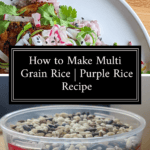
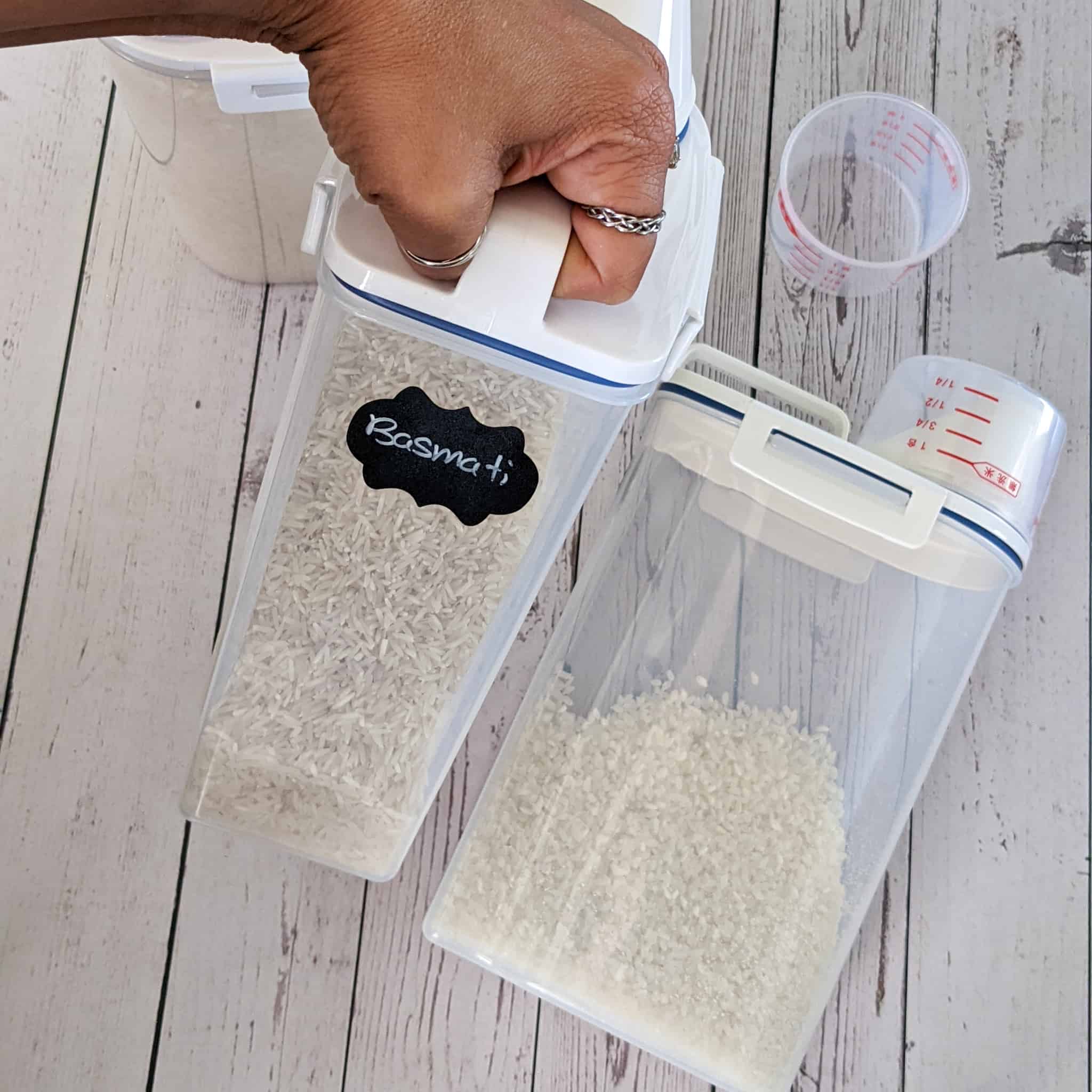
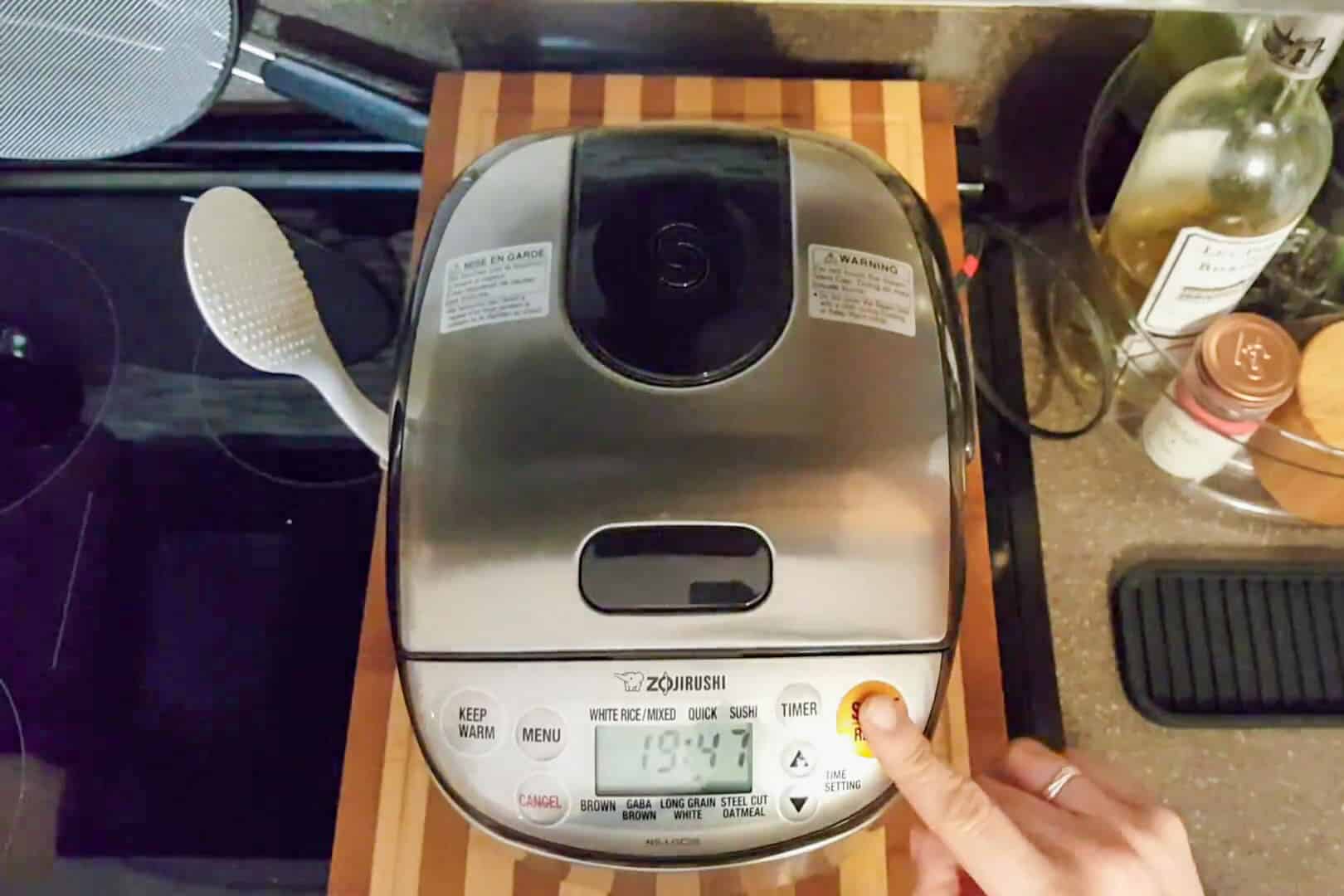

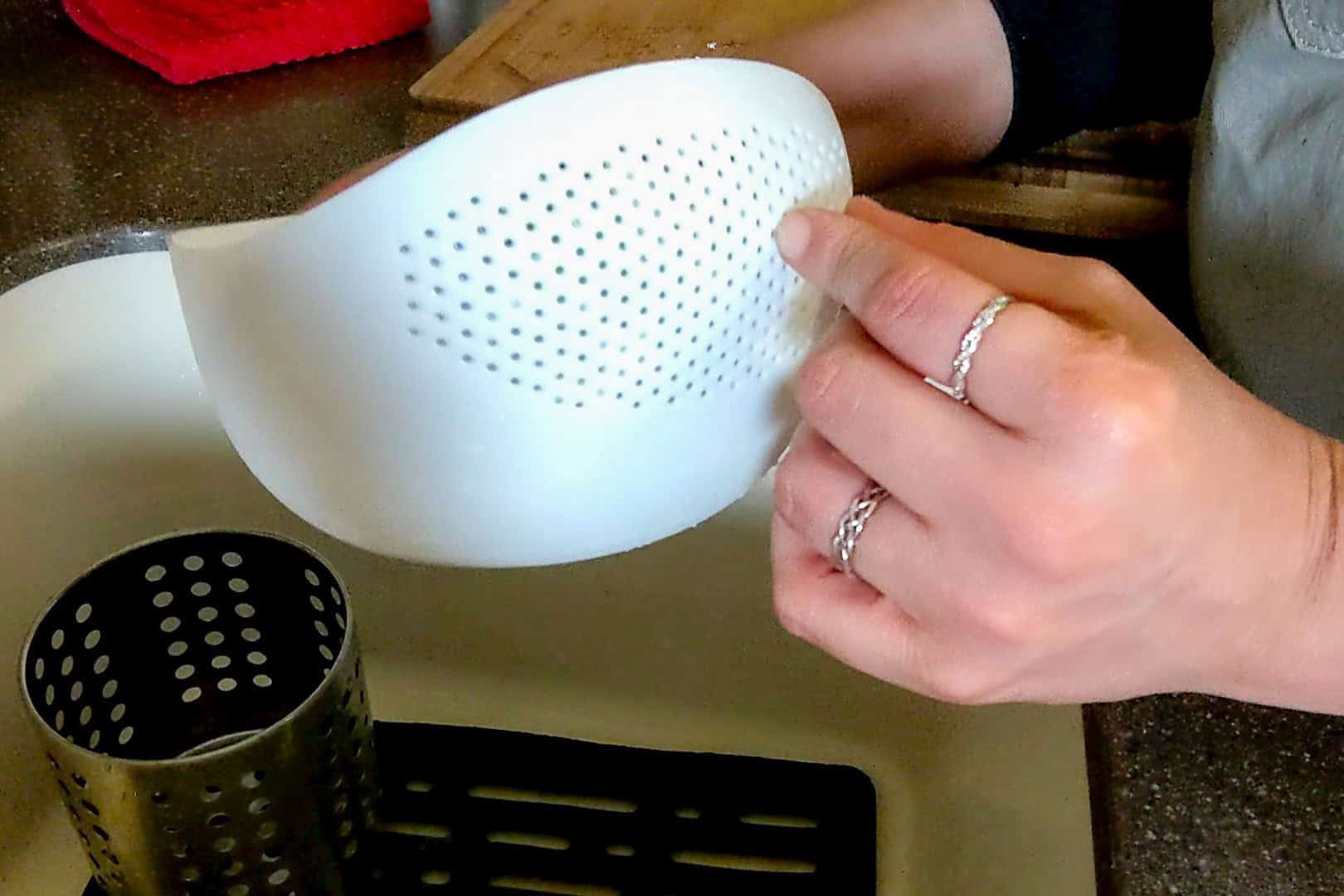






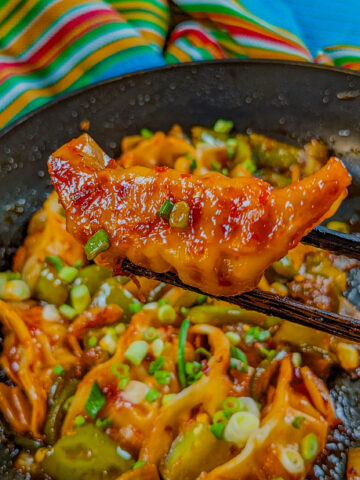
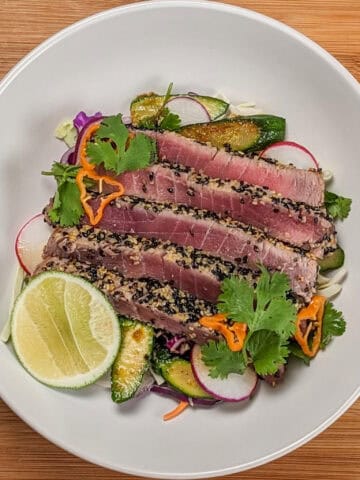


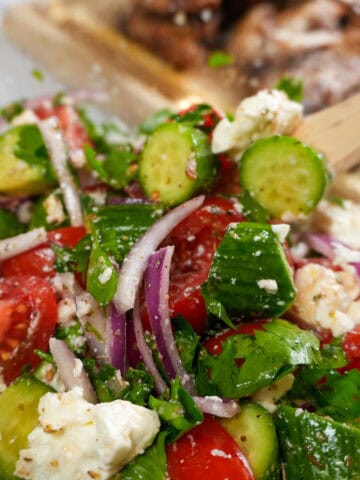
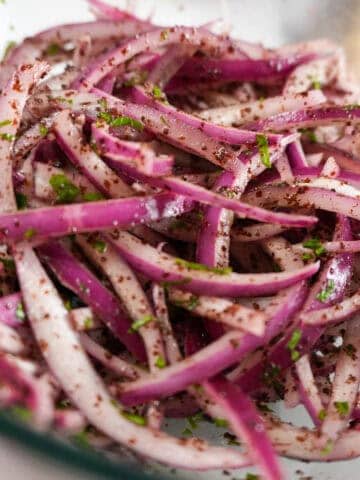
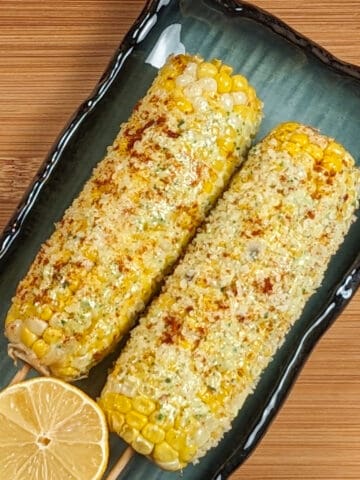
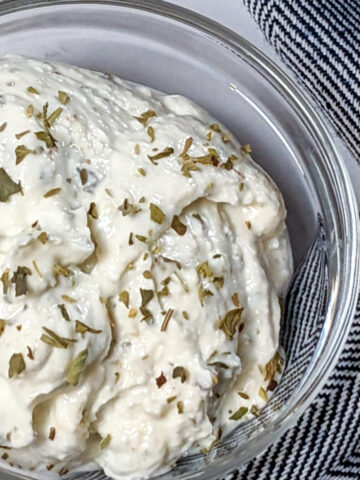
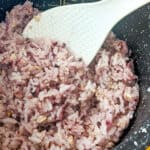
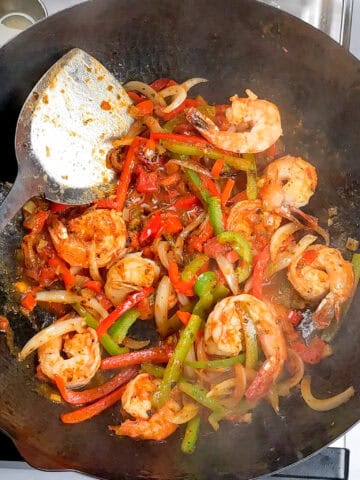

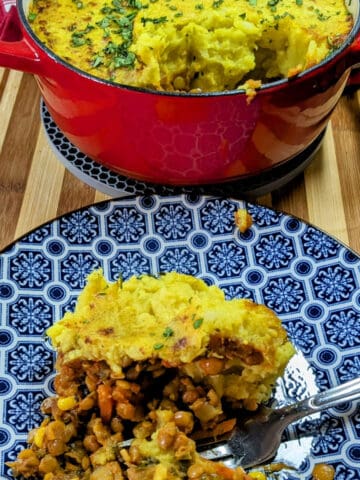
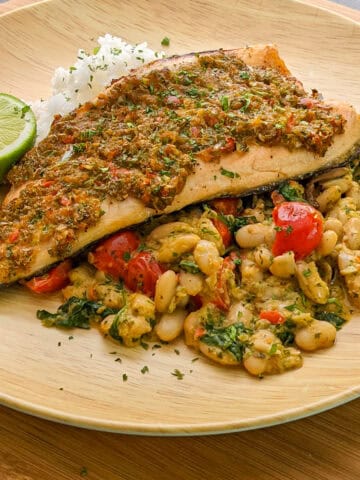
Leave a Reply